Every couple of years, Nvidia launches a groundbreaking, high-end graphics card that redefines PC gaming. The Nvidia GeForce RTX 5090 is the latest in this lineage, ushering in a new era of performance, but its approach is quite unconventional. While the performance improvement over the RTX 4090 might not be as dramatic as one might anticipate without DLSS Frame Generation, the next generation of Nvidia's DLSS technology revolutionizes both upscaling and frame generation, leading to significant enhancements in image quality and performance that surpass typical generational leaps.
The extent to which the Nvidia RTX 5090 represents an upgrade depends on your gaming preferences, the resolution at which you play, and your comfort with AI-generated frames. For those using displays below 4K resolution with a 240Hz refresh rate, the upgrade might not justify the cost. However, if you're equipped with a high-end display, the AI-generated frames can offer a glimpse into the future of gaming.
Nvidia GeForce RTX 5090 – Photos

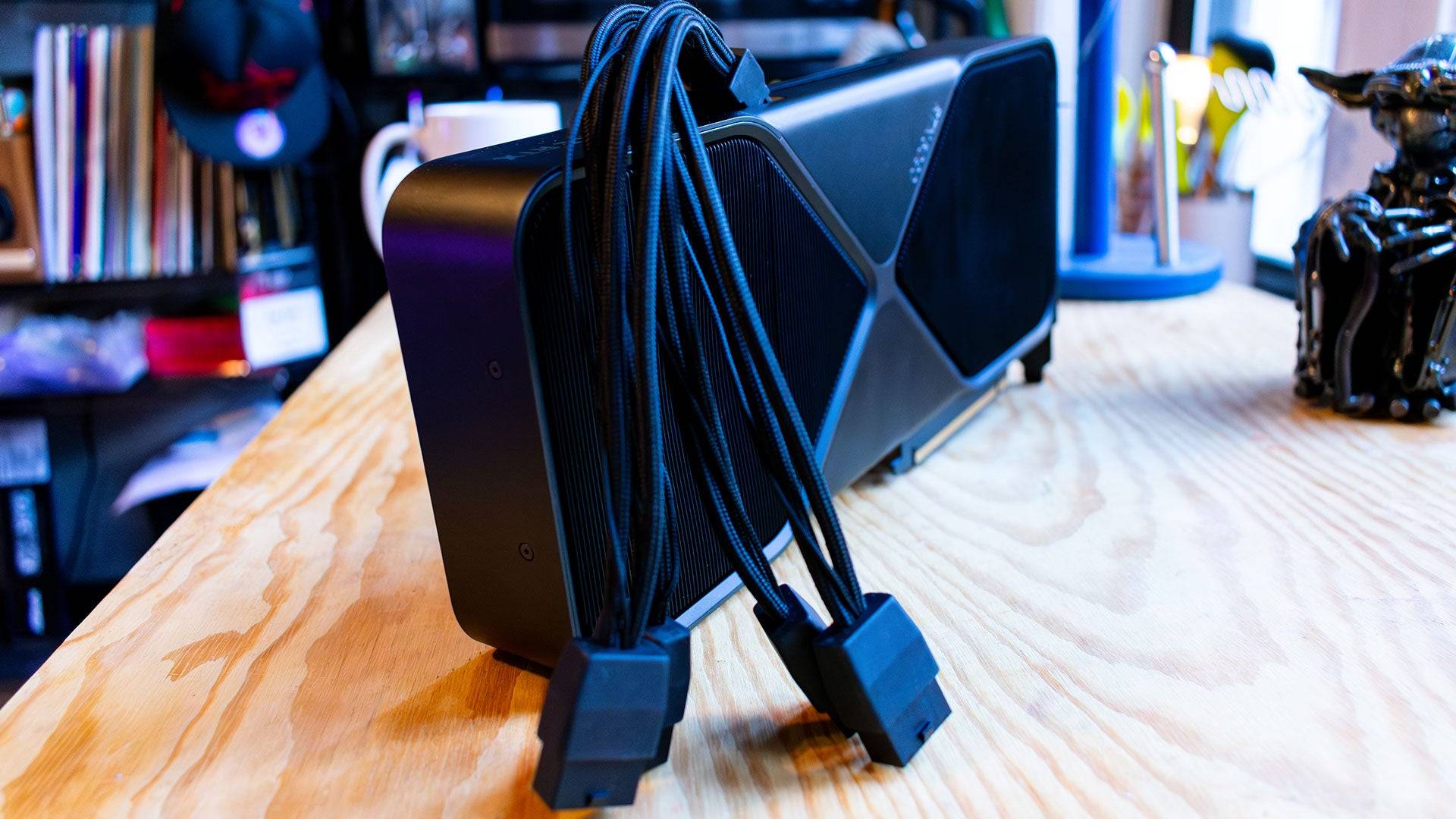 5 Images
5 Images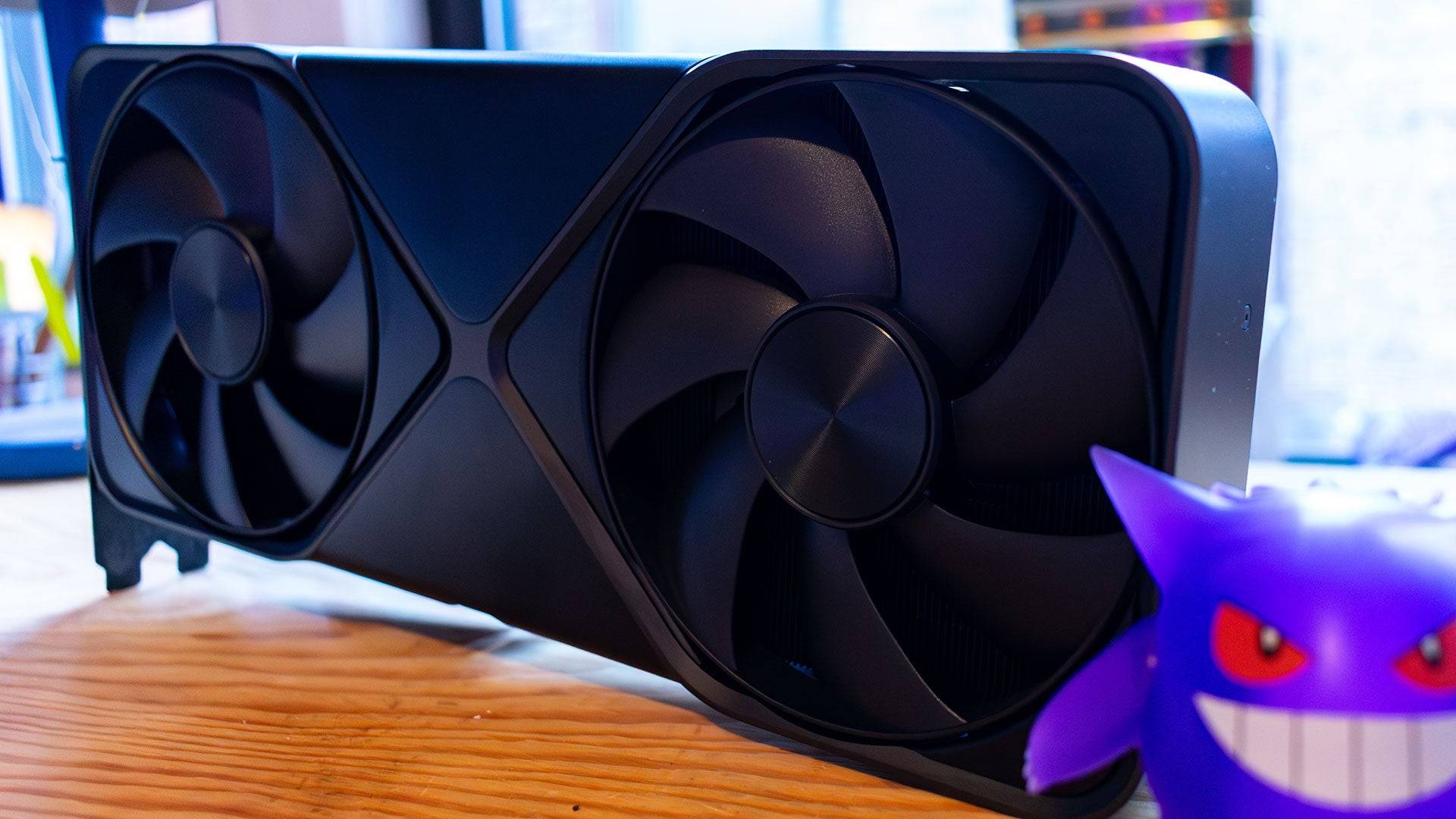


RTX 5090 – Specs and Features
The Nvidia GeForce RTX 5090 is powered by the Blackwell architecture, which is also used in high-end data centers and supercomputers driving popular AI models. This gives the RTX 5090 a distinct advantage in AI-related tasks, but Nvidia hasn't overlooked traditional gaming performance.
The RTX 5090 packs more Streaming Multiprocessors (SMs) into the same number of Graphics Processing Clusters (GPCs), resulting in 21,760 CUDA cores—an increase of 32% over the RTX 4090's 16,384 cores. This boost is crucial for raw gaming performance.
Each SM includes four Tensor Cores and one RT Core, matching the previous generation. With 680 Tensor Cores and 170 RT Cores, compared to 512 and 128 respectively in the RTX 4090, the 5th-generation Tensor Cores enhance AI performance by supporting FP4 operations, reducing VRAM dependency.

The card is equipped with 32GB of GDDR7 VRAM, a significant upgrade from the GDDR6X in the RTX 4090, offering faster and more power-efficient memory. However, the RTX 5090's power consumption is a substantial 575W, a notable jump from the RTX 4090's 450W, indicating that power efficiency isn't Nvidia's primary focus for this model.
Nvidia's shift to a Transformer Neural Network (TNN) for DLSS, replacing the Convolutional Neural Network (CNN), aims to enhance image quality and reduce artifacts like ghosting without necessarily improving frame rates.
The introduction of Multi-Frame Generation with DLSS 4 improves the efficiency and smoothness of frame generation, allowing multiple frames to be generated from each rendered image. This significantly boosts frame rates but is best used when starting from a decent baseline frame rate.
Purchasing Guide
The Nvidia GeForce RTX 5090 becomes available starting January 30, with a base price of $1,999 for the Founders Edition. Keep in mind, third-party models can be considerably more expensive.
The Founders Edition
Despite requiring 575W of power, the RTX 5090 Founders Edition is surprisingly compact, fitting into a dual-slot chassis with a dual-fan configuration. The design efficiently manages heat, with temperatures peaking at 86°C, slightly higher than the RTX 4090 but still within safe limits.
The compact design features a smaller PCB centered between two fans and a heatsink that spans the card's width, directing air through the PC case. The RTX 5090 maintains a design aesthetic similar to its predecessors, featuring a silver 'X' design and a gunmetal-gray chassis with a 'GeForce RTX' logo illuminated by white LEDs.

The power connector has been updated to a 12V-2x6 design, slightly more efficient than the previous 12VHPWR connector. The card includes an adapter for four 8-pin PCIe power connectors, with an angled design for easier installation.
The smaller size of the RTX 5090 allows it to fit into more compact PC builds compared to the larger RTX 4090 and RTX 3090, though third-party models may be larger.
DLSS 4: Fake Frames?
Nvidia claims the RTX 5090 can boost performance by up to 8x, primarily through its advanced frame generation capabilities rather than traditional rendering. DLSS 4's Multi-Frame Generation, enhanced by the new AI Management Processor (AMP) core, efficiently assigns GPU tasks, previously handled by the CPU, to generate up to three AI frames per rendered frame.
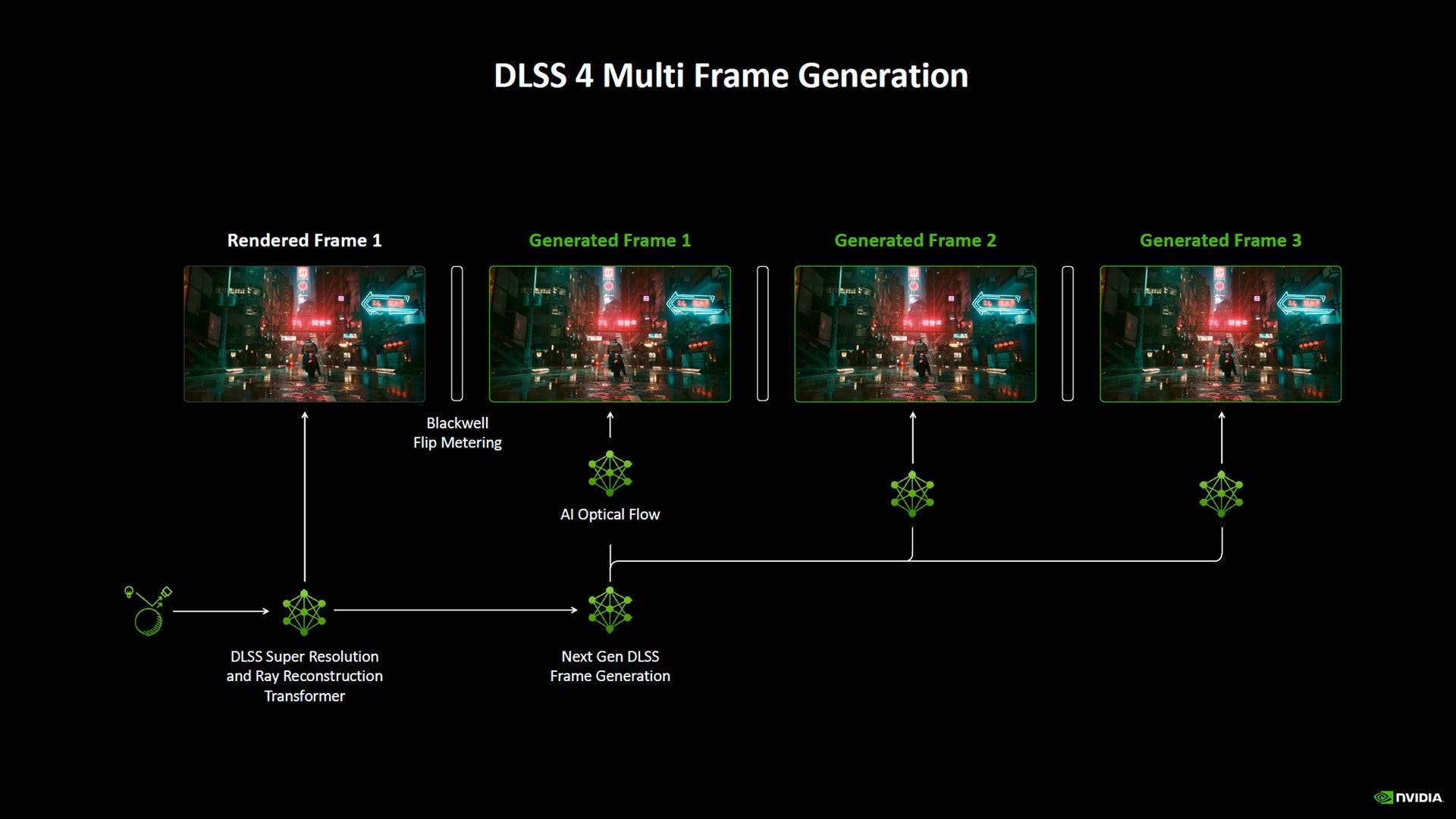
The AMP's Flip Metering algorithm helps reduce input lag, making multi-frame generation exclusive to RTX 5000 series cards. While this technology is impressive, it's most beneficial when starting from a solid frame rate, ideally around 60 fps, and paired with DLSS upscaling.
At launch, DLSS 4 will be compatible with numerous games supporting DLSS 3 Frame Generation. Initial tests in games like Cyberpunk 2077 and Star Wars Outlaws on beta builds showed remarkable performance increases, reaching up to 286 fps in Cyberpunk 2077 at 4K with DLSS 4 enabled.

While some may view these as 'fake frames,' they are undoubtedly valuable for those with high-resolution, high-refresh rate displays. Nvidia predicts 75 games will support DLSS 4 at launch, though performance may vary across titles.
RTX 5090 – Performance
Testing the RTX 5090's performance was challenging due to its high power and the current state of gaming software. In 3DMark benchmarks, it demonstrated up to a 42% performance increase over the RTX 4090. However, real-world gaming showed less dramatic improvements, often limited by CPU bottlenecks, even with a top-tier Ryzen 7 9800X3D processor.
Games like Call of Duty Black Ops 6 and Cyberpunk 2077 showed only a 10% performance uplift over the RTX 4090 at 4K, suggesting that the RTX 5090's full potential may not be realized with current titles. Metro Exodus: Enhanced Edition and Total War: Warhammer 3 showed more significant improvements, but still not as substantial as the leap from the RTX 3090 to the RTX 4090.
Nvidia GeForce RTX 5090 – Benchmarks
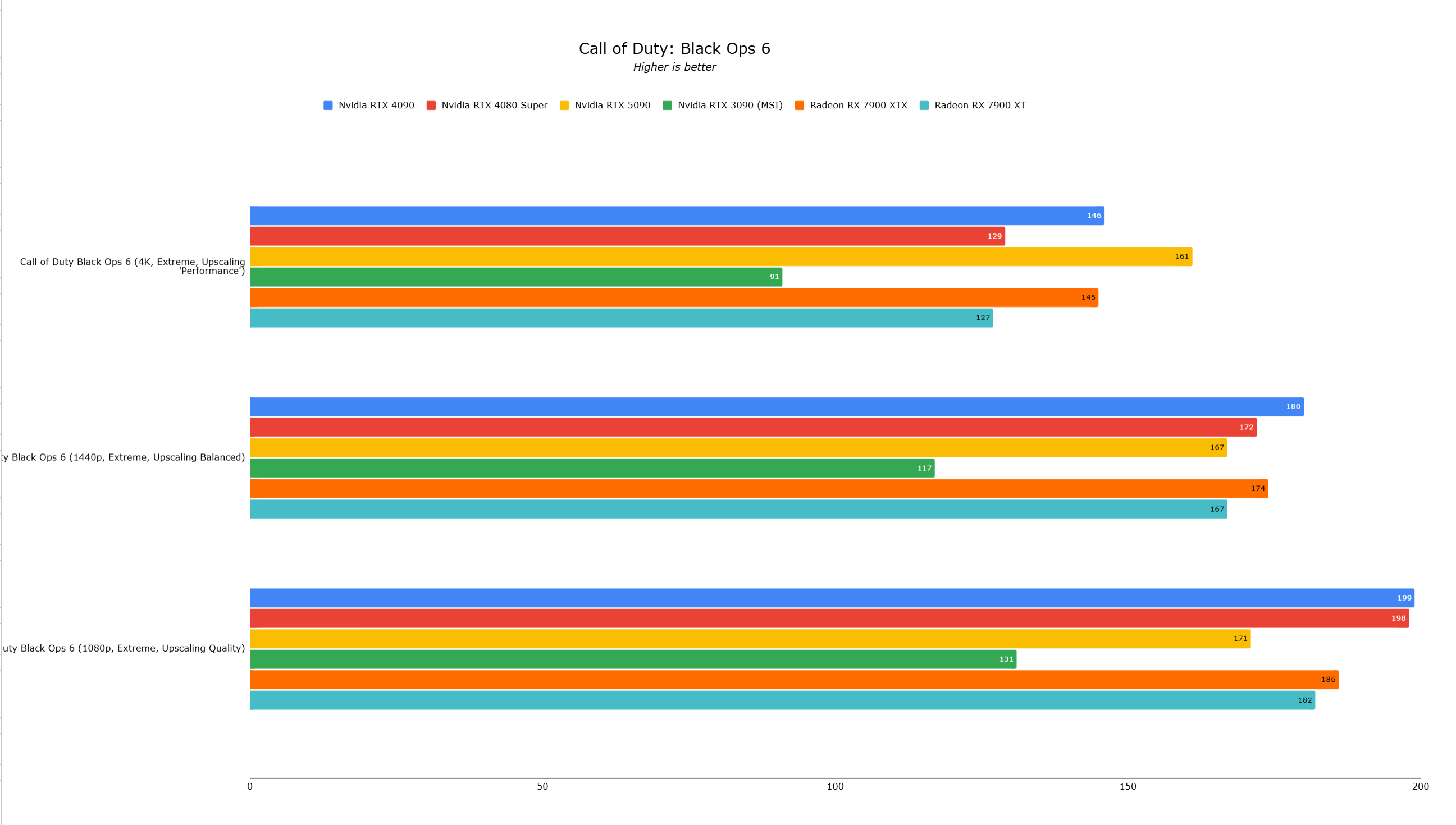
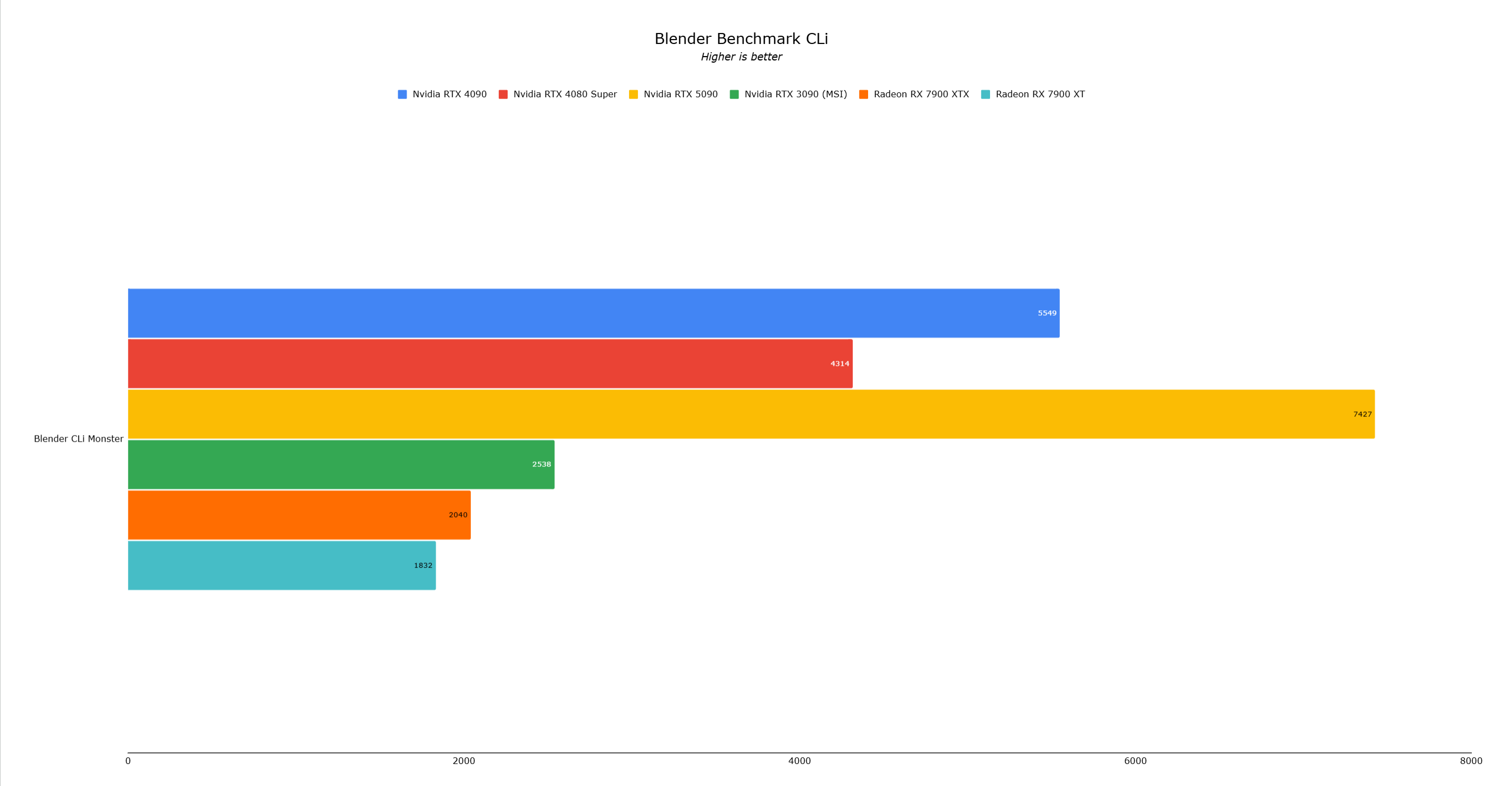 14 Images
14 Images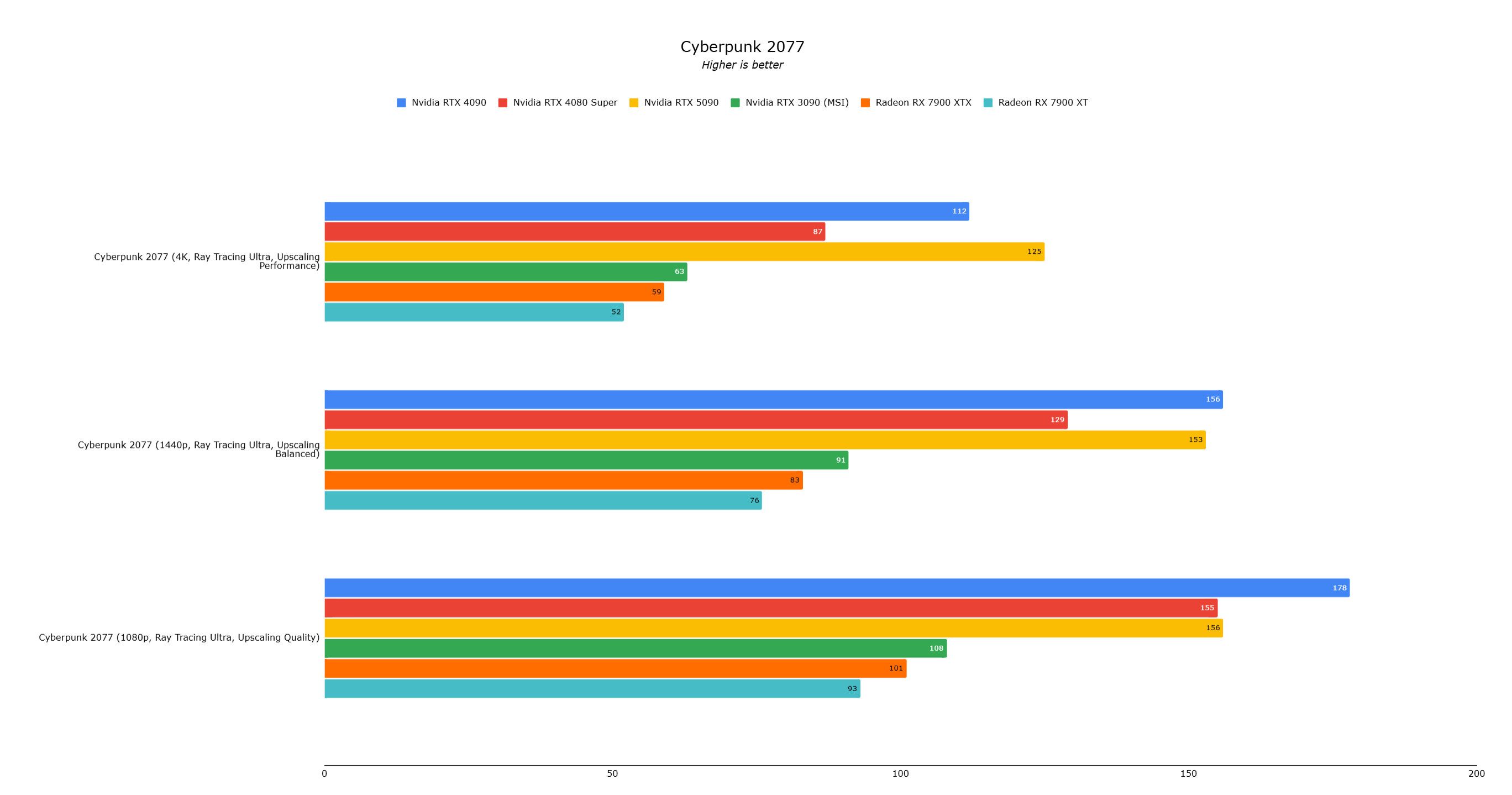
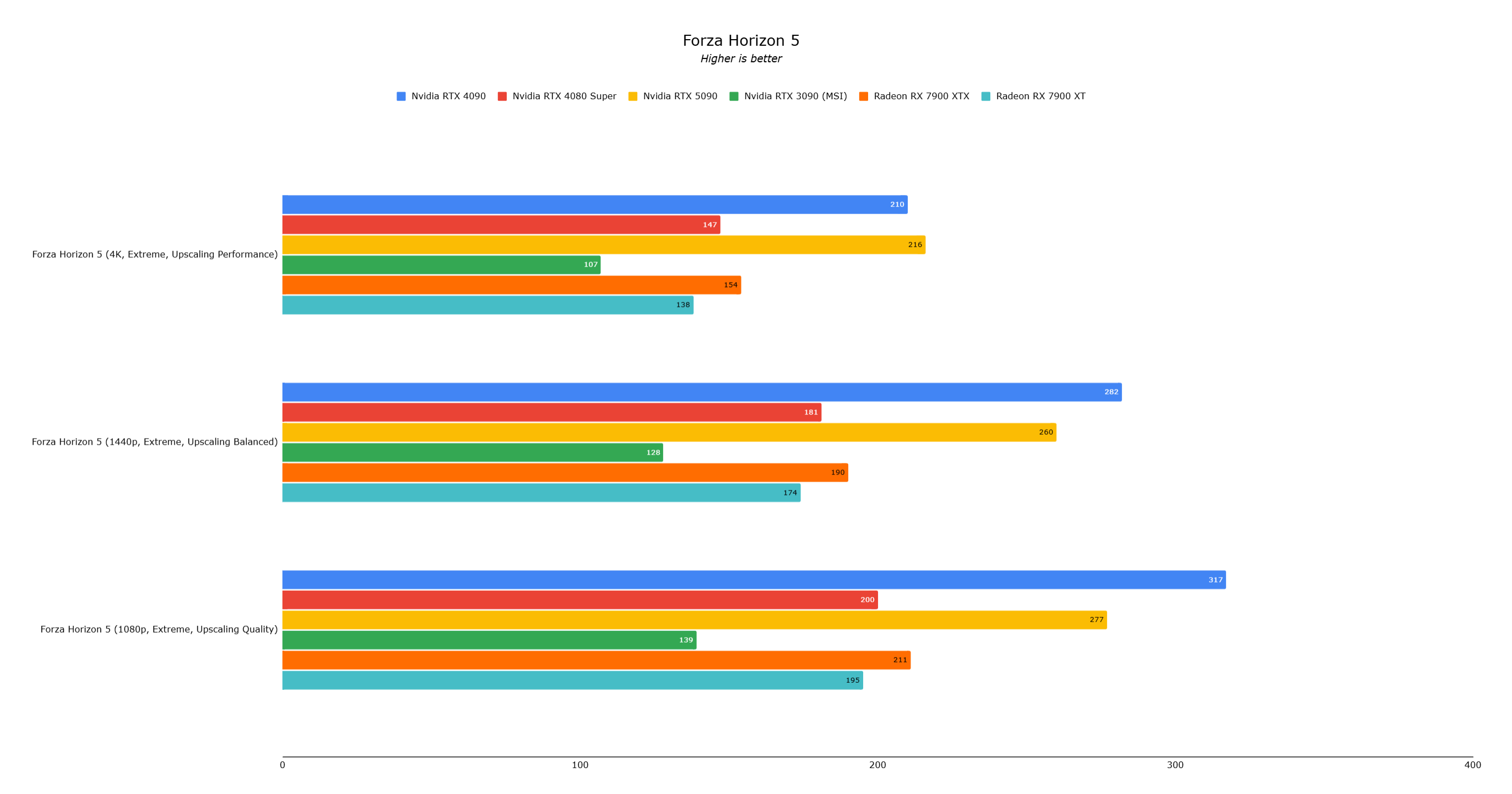
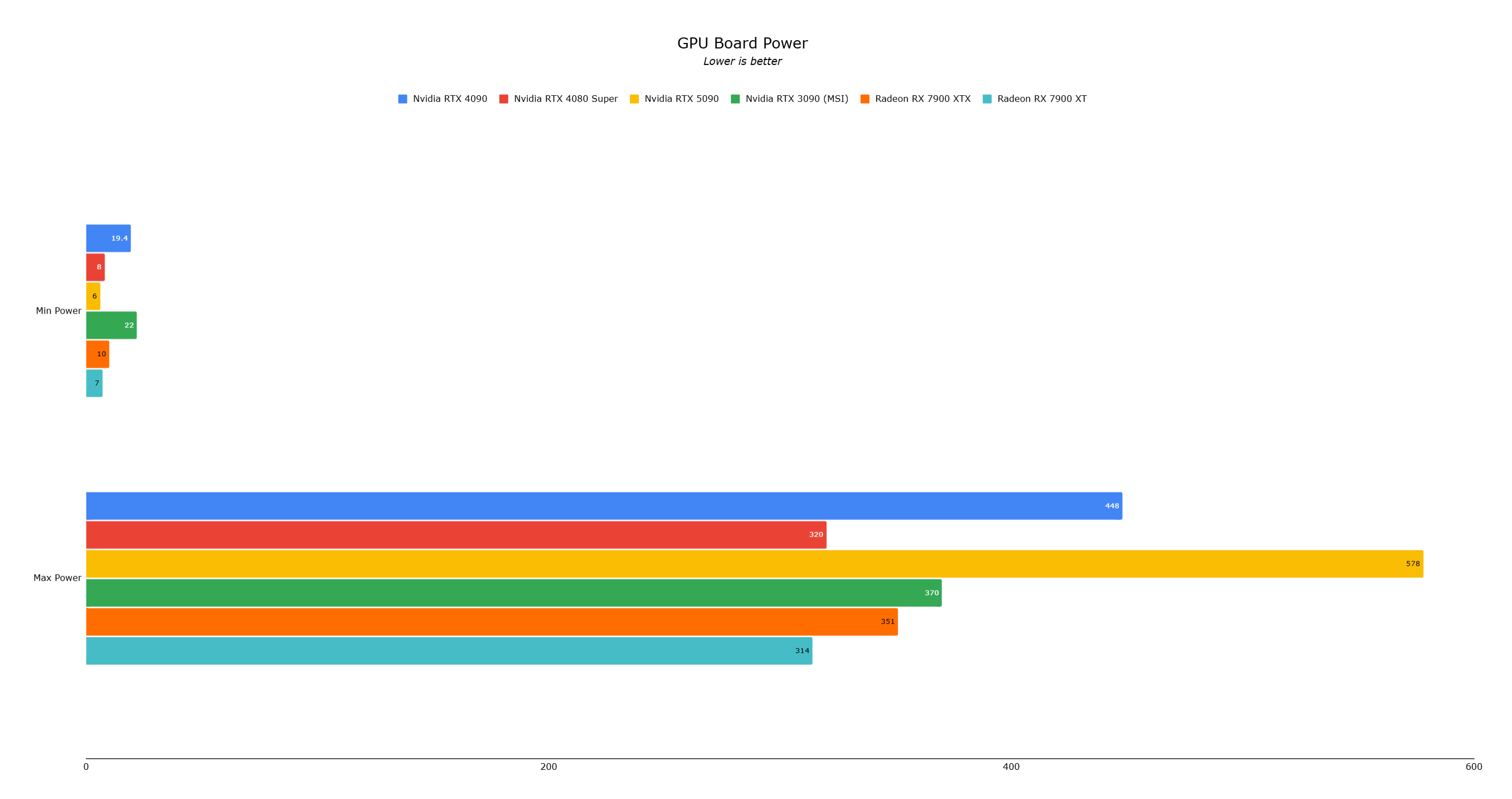
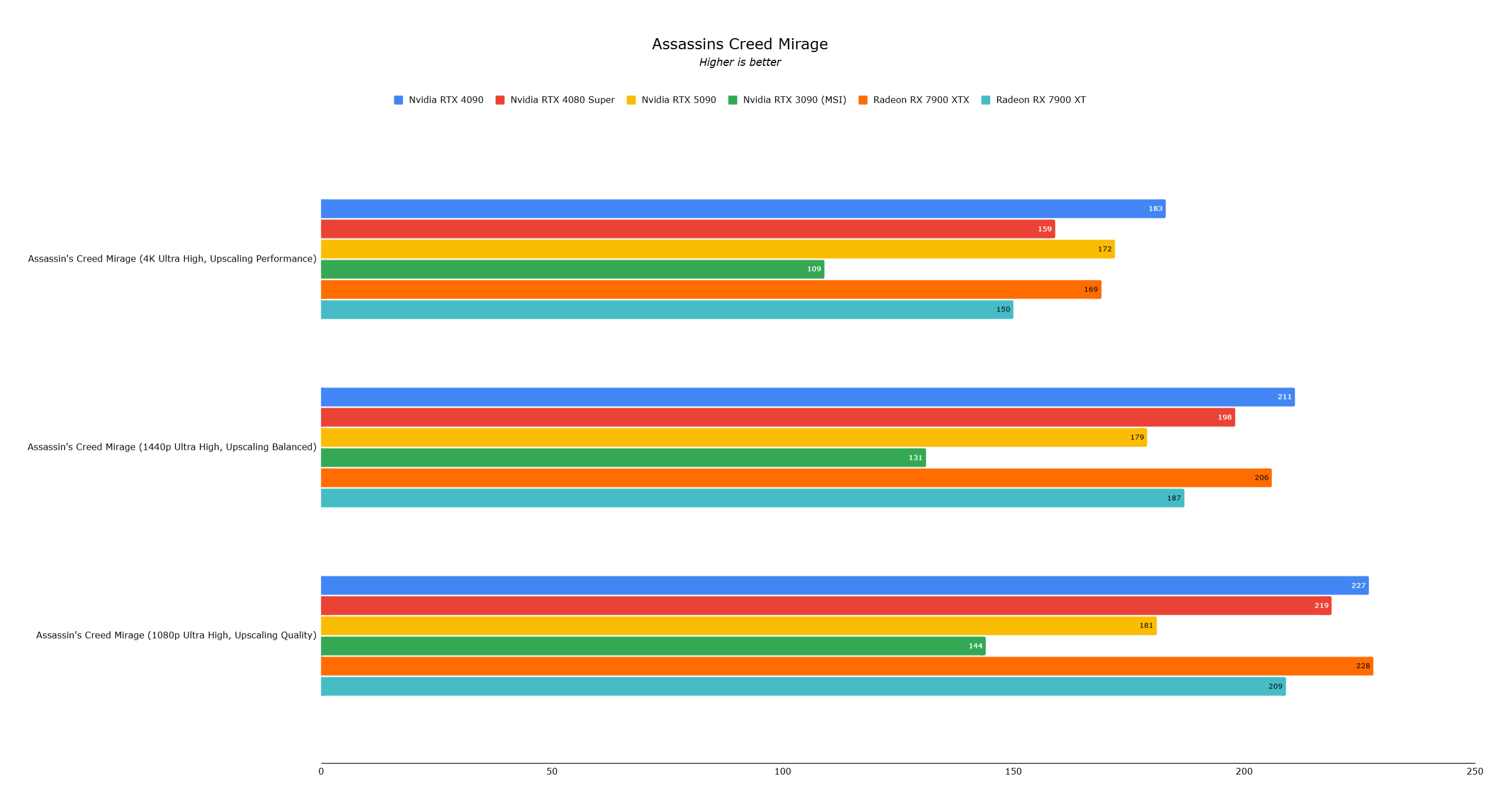
The RTX 5090's performance in games like Assassins Creed Mirage and Forza Horizon 5 was less impressive, highlighting potential driver issues and CPU bottlenecks.
Nvidia suggests that Moore's Law may be slowing down, indicating that future GPUs may not deliver the same generational leaps. The RTX 5090, while currently the fastest consumer graphics card, might not justify an upgrade for RTX 4090 owners due to limited game support.
Instead, the RTX 5090 is positioned as a forward-looking investment in AI-powered gaming. With DLSS 4's significant frame rate improvements, it's ideal for those on the cutting edge willing to invest in the future of gaming technology. For others, the RTX 4090 remains a powerful choice for the foreseeable future.















